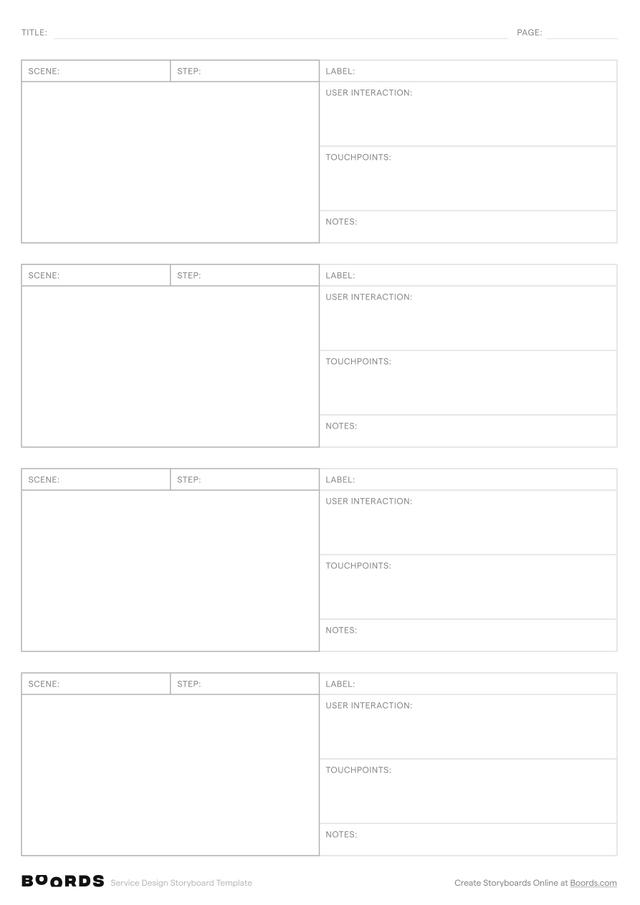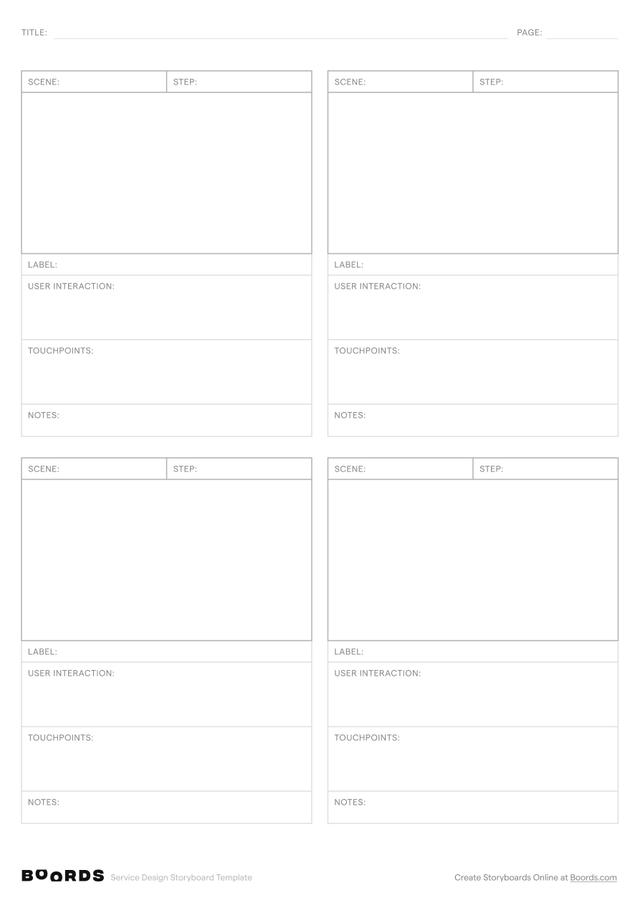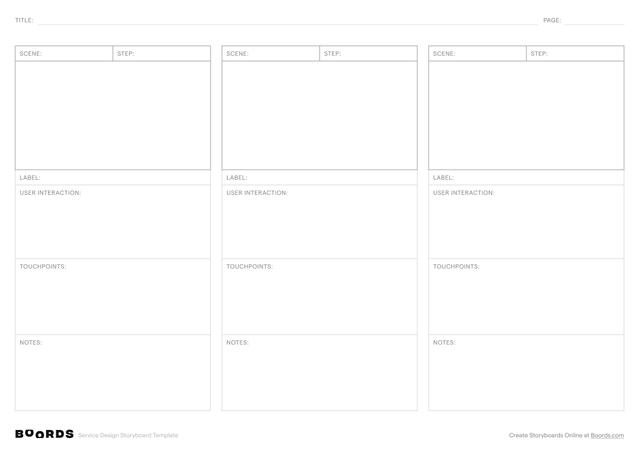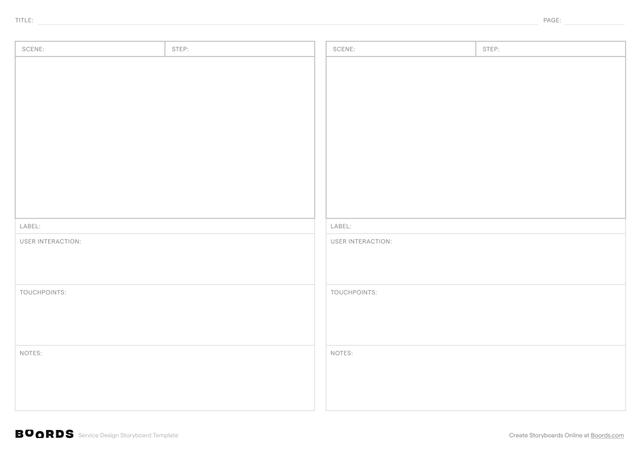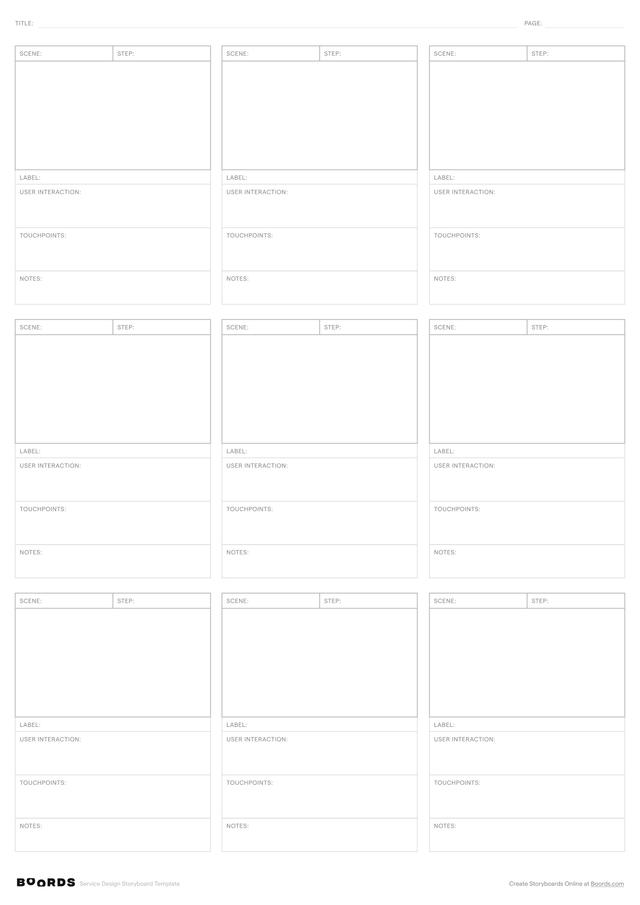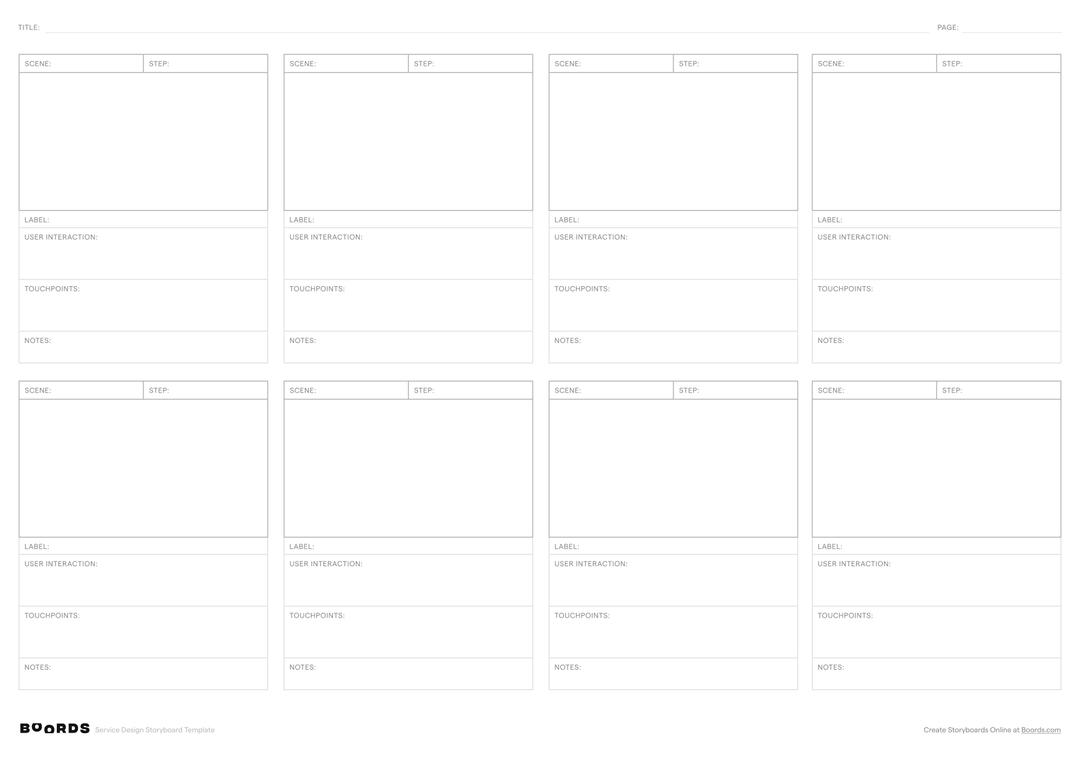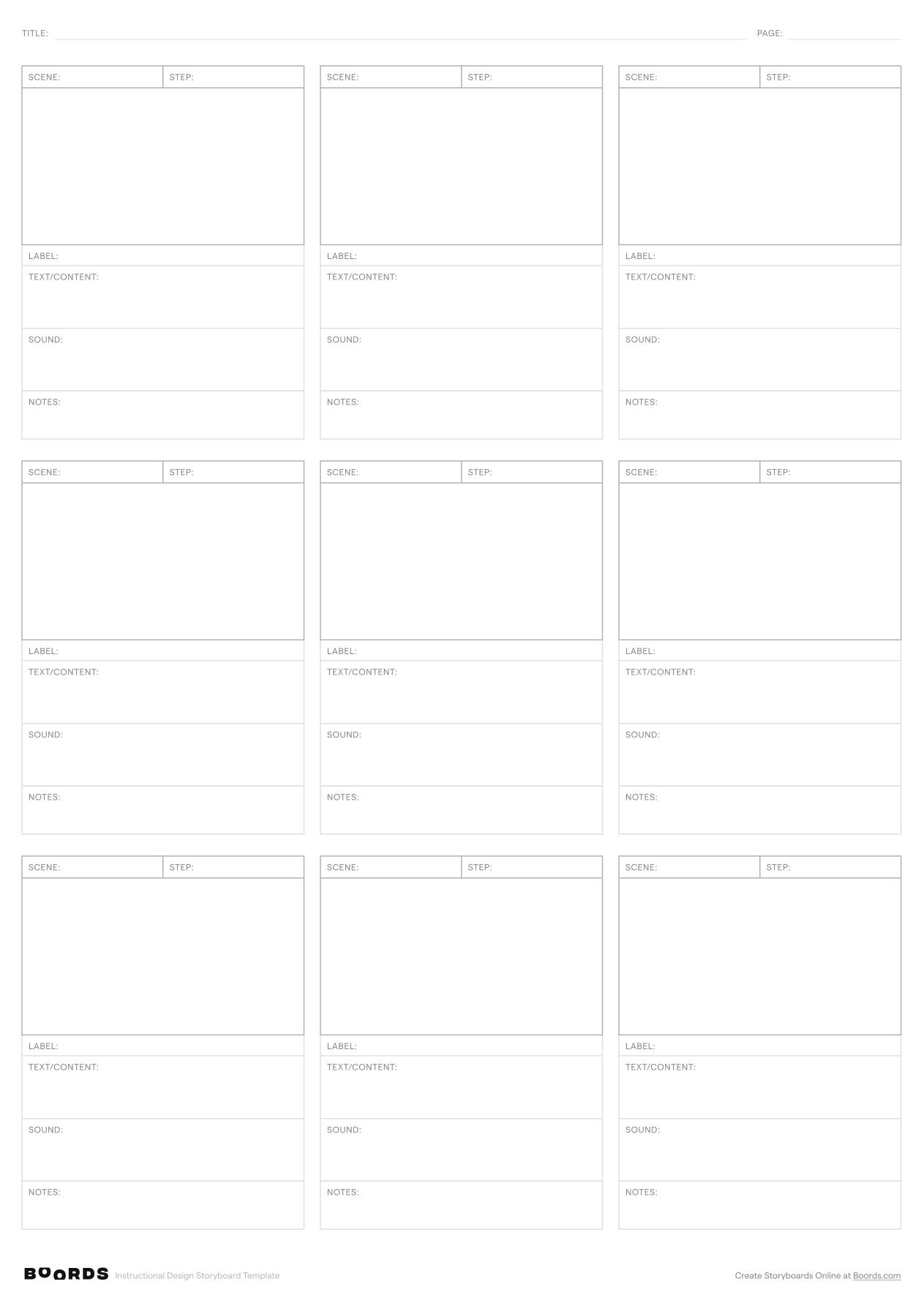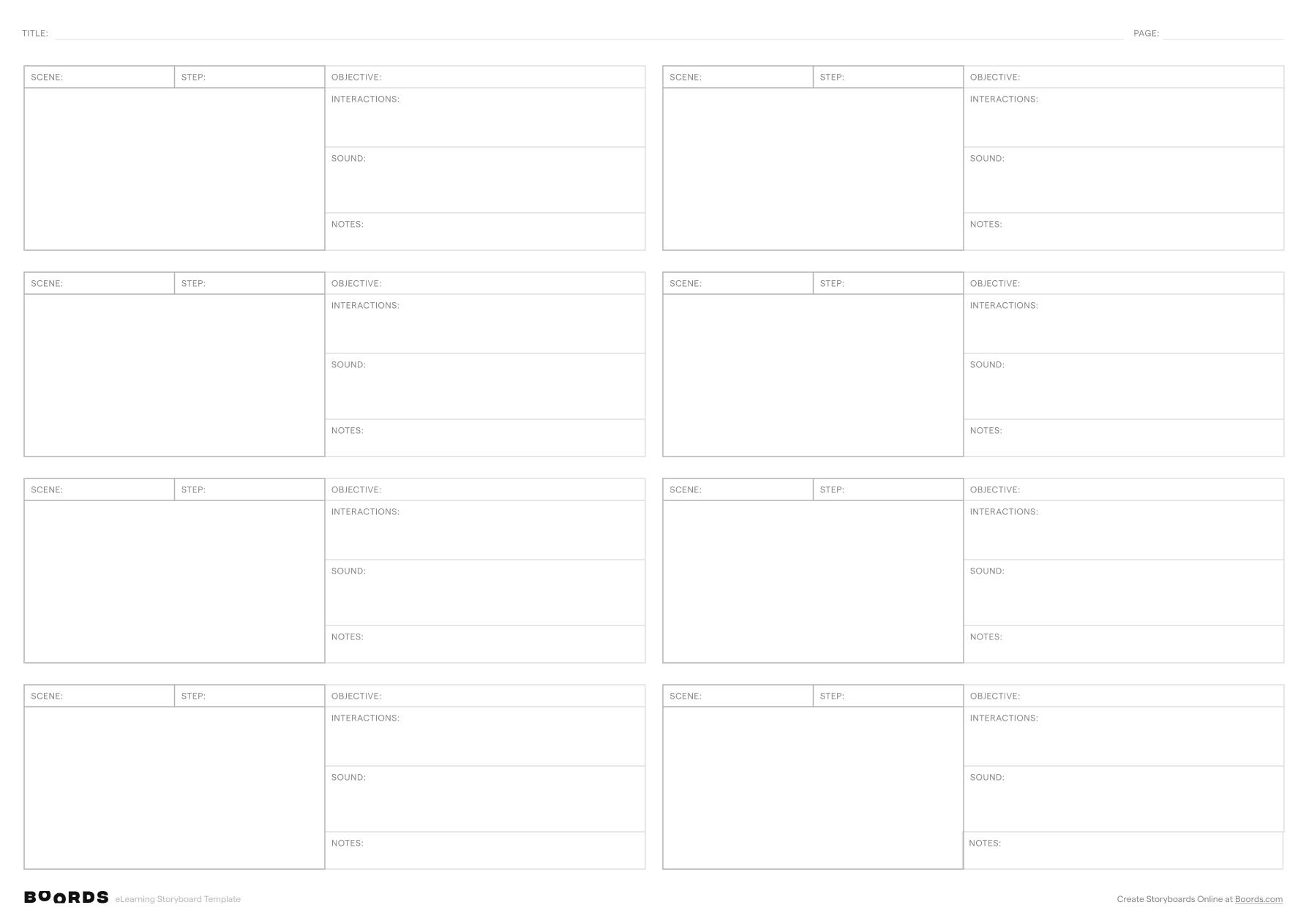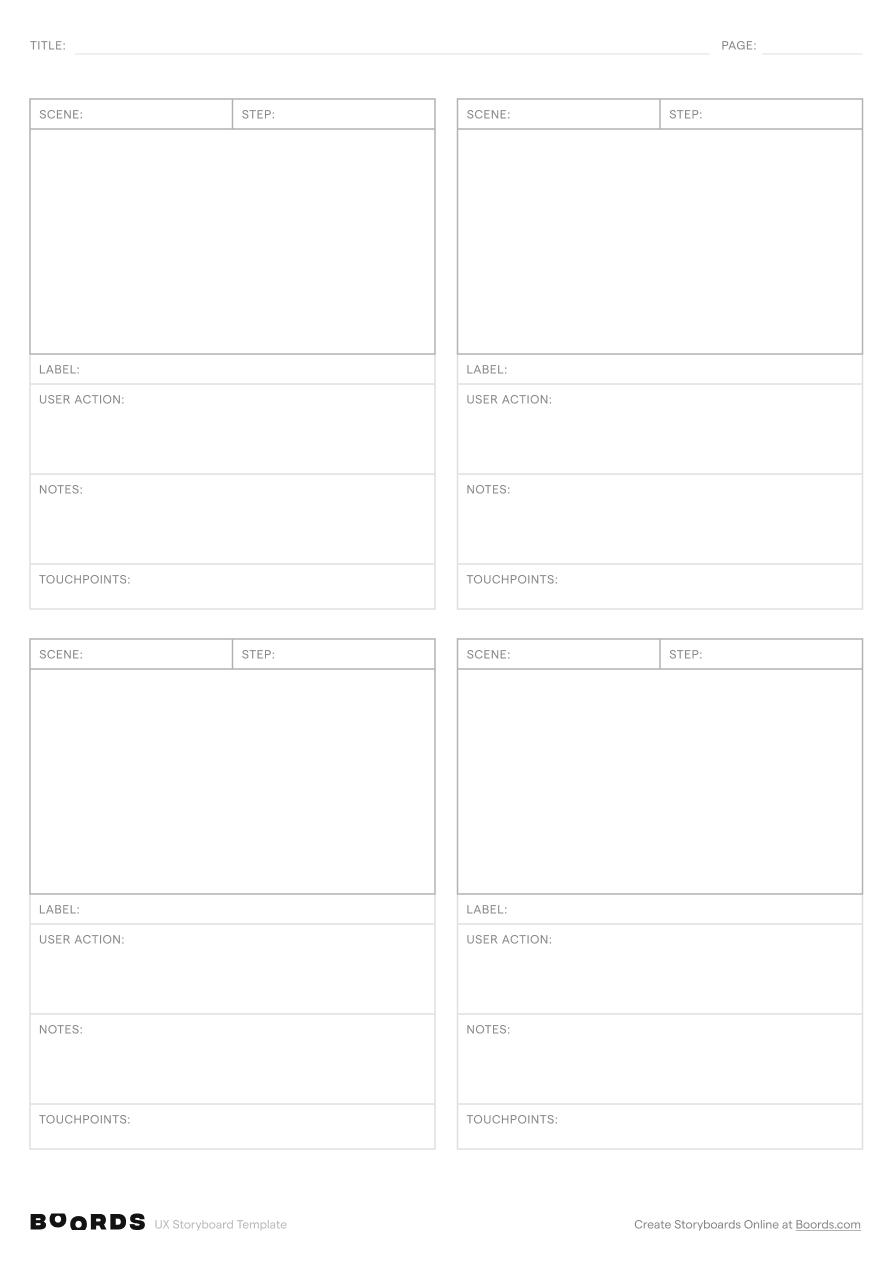Step 1: Add a Title and Page Number

Start by filling in the "TITLE:" field at the top of the template with a clear, concise title that reflects the main focus or goal of your service design storyboard. If your storyboard spans multiple pages, make sure to include the current page number in the "PAGE:" field to keep your documents organized.
Step 2: Identify the Scenes

In the "SCENE:" column, provide a brief, descriptive label for each distinct scene or stage in your service design process. Scenes represent key moments or interactions that occur throughout the user's journey. If a scene extends across multiple steps, repeat the scene label for consistency.
Step 3: Number the Steps

In the "STEP:" column, assign a sequential number to each step within a scene (1, 2, 3...). Steps are the individual actions, touchpoints, or events that make up a scene. Numbering the steps helps maintain a logical progression and flow throughout your storyboard.
Step 4: Add Labels

In the "LABEL:" column, provide a brief, descriptive label or title for each step in the service design process. These labels should succinctly capture the main action, goal, or purpose of each step, making it easier to navigate and understand the overall storyboard.
Step 5: Describe the User Interaction

In the "USER INTERACTION:" section, provide a clear description of how the user interacts with the service or system at each step. Detail the specific actions, choices, or inputs the user makes, and how these interactions shape their experience.
Step 6: Identify Touchpoints

Under the "TOUCHPOINTS:" heading, list all the relevant touchpoints or channels through which the user interacts with the service at each step. Touchpoints may include physical spaces, digital interfaces, customer service interactions, or any other means by which the user engages with the service.
Step 7: Include Notes

Use the "NOTES:" section at the bottom of each scene to include any additional comments, observations, or ideas related to that particular part of the service design process. This space is perfect for noting any pain points, opportunities for improvement, or specific design considerations.
Step 8: Review and Refine
Once you have completed the storyboard template, review the entire document to ensure a coherent and logical flow throughout the service design process. Look for any gaps, inconsistencies, or areas that need further clarification. Refine and iterate on your storyboard as needed to create a comprehensive and effective representation of your service design.
